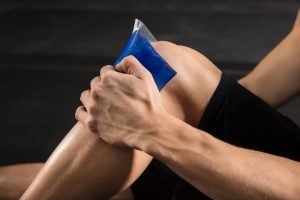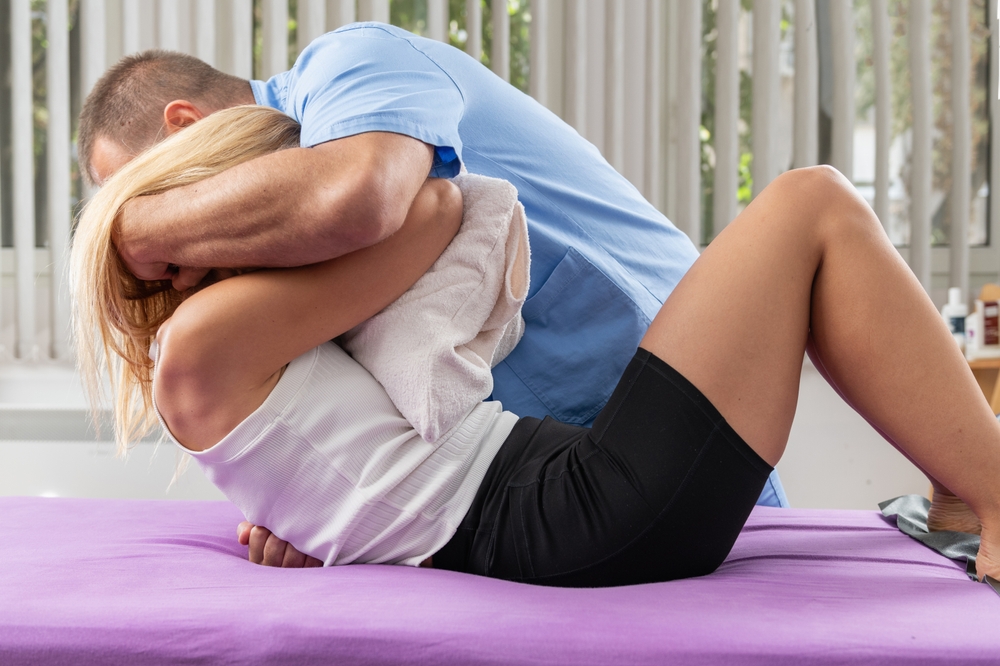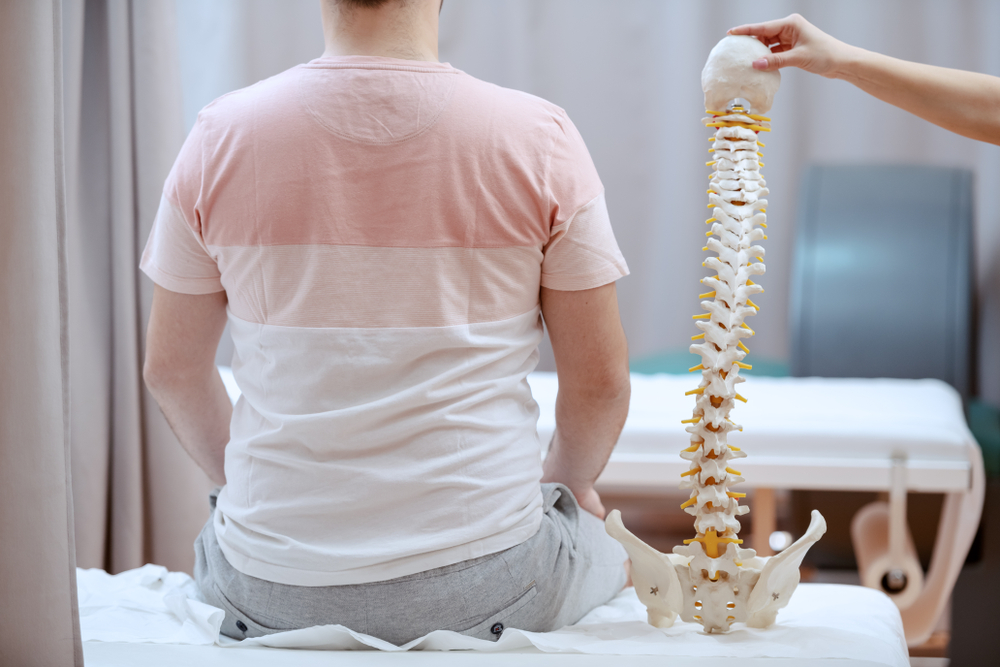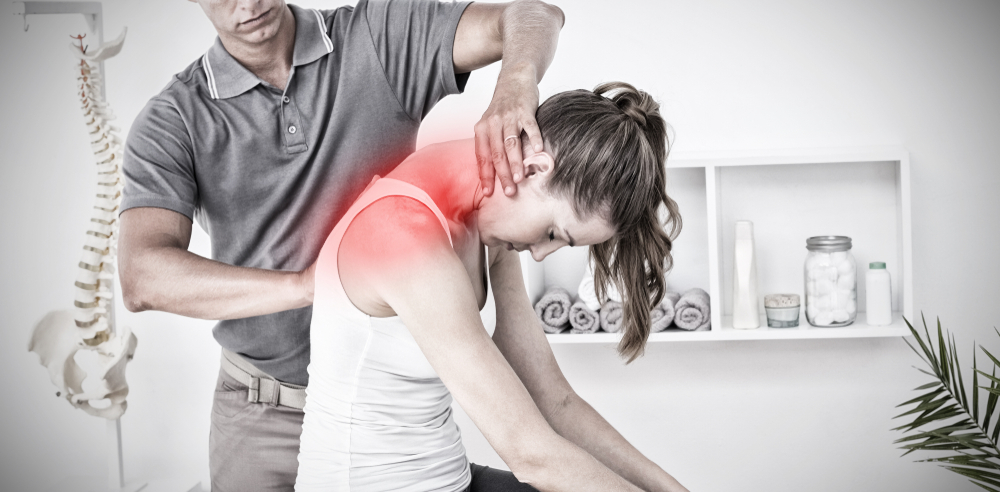Happy, Healthy, RESTED Spines

The comment of the day in my office yesterday was, “I wake up with pain, and I don’t know why.” If you are waking up with pain, it probably has something to do with how you are sleeping. Posture is just as important when you are sleeping as when you are awake.
Patients often ask me, “What is the best mattress?” It’s really all about what is comfortable for you. Everyone is very different, but a good rule of thumb is to get a mattress on the firmer side. A mattress that is too soft will not provide good support for the spine. A mattress that is too hard may put pressure on trigger points on the back. Personally, I avoid the pillow top mattresses because you cannot flip and rotate the mattress. The key is to take your time and test out the mattress to make sure it is comfortable for you.
There are basically three body positions for sleeping. The best positions are either on your back or on your side. While lying on your back, you should put a pillow under your knees to take the pressure off of your low back. You also want a pillow under your neck that will support the curve in your neck. Feather pillows, while cozy, will guarantee that I wake up with a headache. They do not support the cervical curve like a contour pillow. If I am at a hotel, and I forget my to bring my pillow from home, I will take a small rolled hand towel and place it under my neck for added support.
Laying on your side is another good way to sleep. When on your side, you want to keep a pillow between your knees to keep your pelvis in a nice, neutral position. This will prevent a lot of low back pain because it alleviates stress on the sacroiliac joints. Again, you want to use one pillow under your neck, preferably a contour type of pillow, to give your neck the support it needs.
This brings us to sleeping on your stomach. This is not at all an ideal position for sleeping. It is harmful to both your low back and your neck. Try to break this bad habit if at all possible. For the stomach sleeper that just can’t break the habit, the best mattress is a firmer mattress. Even if you sleep one less hour a night on your stomach than you normally do, you are making your spine happier and healthier.
No matter what type of mattress you have or what position you sleep in, 8 hours of quality sleep is very important. If a patient is not getting enough sleep, the healing process for injuries will be prolonged. Enjoy your happy, healthy, RESTED spine!
About the Writer
tech
To Reap and to Sow

There is an old story of a farmer who sows seed and reaps a harvest. There were always variables that altered the size of the harvest, but he always had a crop to reap after he had sown. Several themes of the story are constants and can be applied every day in our offices. Those themes are: The seed sown was of the finest quality, and the farmer never stopped sowing.
The first of the themes is that the seed was of the finest quality! Much like the farmer of the parable, we sow the finest seed in the form of the story we tell ourselves and our patients. The chiropractic story is the basis of health and wellness and is spread daily in our minds and in our offices. If we tell the most basic version of this story, our patients can choose to plant that story in the fertile soil of their minds and produce the fruits that will lead to a happier and healthier community for us to serve.
The chiropractic story is this: The nervous system controls all aspects of bodily function and when it functions with no interference, the body is allowed to have full physiological expression and a life of health and wellness can be lived. When we remind ourselves each day of the power of this simple message, we are more capable of living the message ourselves and sowing the seeds that will allow our patients to do the same. The people we serve should hear the message frequently and consistently from Drs and staff members alike to be able to ingrain it into their minds so that they may allow it to bear the fruit from the soil of their minds.
Some of the soil the farmer sowed his seed on was 30% of productive capacity. Some of the seed fell onto soil that allowed for 60% growth and fruitfulness, and some fell on 90% fertile soil. Drought got some of the seed, birds got some, and the thorns had some success in choking out the potential of the harvest. Regardless of the outcome of where the seed landed, the farmer KEPT SOWING!!! That’s what we should do as well.
One of the harder things I find myself dealing with after telling the story of how I can help the masses is disconnecting from the “quality of the soil” the seed falls on. I tell the story and if it should be to a person who only wants 30% potential of our art (pain relief), I sometimes find myself trying to fertilize, water, and prompt their soil to produce more. When this patient feels better, they disappear and I take it personally that they didn’t fully express the potential they have inside. Instead of trying to get the 30%-ers to do more, I should just focus on the story and tell to more people. I should just keep sowing. Then by percentages alone, I’ll be able to reap more when it comes time for harvest.
The patients who understand and produce 30%, 60%, or 90% should not be goaded or pried into producing 100%. THEY NEVER WILL!! The shear energy needed to do so would make us incapable of sowing any further seed. The quality of the soil that is sowed upon is beyond our ability to change after the seed is cast. We can, however, focus our sowing and reaping on the soil we know to be better producers of fruit. We can give more attention to the fruitful soil and expect more in return.
Each day focus on the soil that will produce the largest harvest, give attention in proportion to the harvest you’ll reap (30% to the 30%-er, 60% to the 60%-er, etc), and most importantly, KEEP SOWING THAT EXCELLENT SEED!!!
About the Writer
tech
Fatherhood

Last week, when I was cleaning out my car, I made a neat discovery (besides the fact that I need to clean out my car more often). As I was rustling through papers in the passenger seat of my car, I came across one of our church bulletins from earlier this year. On the back of the bulletin were some notes I had scribbled along with a short list of 5 words. The words were: Accepting, Available, Respectful, Generous, and Happy. After I deciphered my chicken scratch (I usually am not an astute sermon note taker, but it was a Father’s Day Service), I remembered that these were 5 attributes Dr. Robert Moore, our pastor, had set as “Golden Unconditionals of Fatherhood”.
I don’t have a ton of experience as a parent, but I know that it can definitely get challenging at times. Managing patients can be that way as well — challenging. Sometimes, it helps to have some reminders or guidelines to help our management of patients. A father incorporating these five important points would help a ‘Great Dad’ move towards becoming an ‘Excellent Dad’. I am glad I rediscovered these attributes, and I have already begun to apply them to my role as Father at home with my 5-year-old daughter. However, with our recent talk of ‘Absolutes’, I began to think of these attributes as qualities that we could apply to our daily interaction with our patients along with our pursuit of true service excellence and patient care. Here is how we can apply these unconditionals in our daily practice:
Be Accepting: Every patient that walks through our doors should be accepted regardless of our initial impression. Many people who are in extreme pain, or plain just don’t feel well, do not always look or act their best. We should be accepting based on the Oath that we took and our dedication to improving the health of our communities through Chiropractic care.
Be Available: In line with our continual pursuit of excellence, we are there to serve when others are not. Being available also means being available mentally 100% for that patient at the time we are with them. We will make a significant impact on many lives by making ourselves available.
Be Respectful: Being respectful does not mean being a pushover. We can hold strong to our recommendations that will ultimately relieve pain and restore health. However, respecting and working with patients’ schedules, routines, lifestyles, and opinions is very important in working towards facilitating healthier lives.
Be Generous: We are generous with our time, for sure. We should all go above and beyond every day and work with patients to provide a consistent, quality experience based solely on the need for care. Our flexibility with patients will further show our generosity. What comes around, goes around, and as a doctor, being generous is a MUST.
Be Happy: There is nothing worse than having a crabby doctor or care provider. Smiling is indeed contagious. We should be happy in that moment we are with each and every patient. We don’t have to be silly or always the entertainer, but the joy that we have inside by serving our patients at the highest level should provide us with tons of happiness to spread around. Happiness is healthiness!
By applying these unconditionals, it will definitely help us in our lives at home. However, as we strive to be the leaders in providing quality chiropractic care to our respective communities, we can use these attributes as tools to better ourselves as we move forward in our journey towards excellence in healthcare!
About the Writer
tech
New Research Shows Why Chiropractic Care is So Effective
 The first Chiropractic adjustment was given in 1895 by D.D. Palmer. Chiropractic care has been achieving tremendous results with patient care. Unfortunately, until recent years Chiropractors have only been able to theorize why so many patients improved with their care.
The first Chiropractic adjustment was given in 1895 by D.D. Palmer. Chiropractic care has been achieving tremendous results with patient care. Unfortunately, until recent years Chiropractors have only been able to theorize why so many patients improved with their care.
Initially, Chiropractors stated that when a bone of the spine or vertebrae misaligned it put abnormal amounts of pressure on the nerve that it was designed to protect. Essentially a hard bone was pinching a soft nerve. That pressure prevented the nerve from working properly and thus caused symptoms or unease in the body. The theory was later proved to be accurate when it was discovered that it only took the weight of a dime to alter the function of that nerve. Thus, when a Chiropractor would deliver an adjustment, they would reduce the pressure on the nerve and the body would begin to heal.
Next, Chiropractors theorized that spinal joints could move out of position and scar tissue would develop around the joints thereby attracting fluid (swelling) and again would pressure the nerve. This pressure would generally account for pain and immobility and is one of the main reasons why people visit a chiropractor today. When a Chiropractic adjustment was delivered it would reduce the swelling, improve the mobility of the joint and decrease the pressure on the nerve. Again, the body would begin to heal.
Today, new research demonstrates how the loss of the central nervous system’s ability to adapt to changes in your environment and recover has become the critical issue in achieving wellness and staying healthy. The role of Chiropractic in improving the function of the central nervous system is the key to the benefits of care. A series of EEG’s, which are specialized tests that measure brain waves, demonstrated how a Chiropractic adjustment can alter the nature of the brain wave and allow the nervous system to essentially “restart.” These new findings explain why Chiropractic care is so effective in helping patients that present with a range of symptoms from headaches/migraines to ear aches and indigestion.
About the Writer
tech
4 simple steps you should take before shoveling snow!

With the amounts of snow that have fallen this winter, you would be hard pressed to find anyone who has not had to shovel at least a little bit. Most of the folks who have donned the snow boots and grabbed the shovel haven’t done so in quite some time and are most likely prove to injury.
My office has had a reoccurrence of snow-shoveling-related injuries that may have been avoided. Here are some tips to make sure you don’t join the masses and by keeping your spine safe.
1- Wait until the snow quits falling- This seems like a very common-sensical statement, but if there is snow in the driveway, you are not required to leave the house, and more is on the way, then leave it. Let the neighbors think you are untidy because you’ll have enough energy left and be pain-free enough to help them clear their drive later.
2- Hydrate well- In winter months our bodies require just as much water to function well as they do in the heat of the summer, but our thirst often isn’t as noticeable. So make sure your muscles are hydrated well to avoid possible injury.
3- Stretch- Warm up prior to getting outside by doing some light stretching exercises. This may seem silly, but certainly not as silly as lying in the yard in pain because you failed to take this simple step.
4- Take breaks- All that snow fell over several days, so what makes us think we should clear it all in an hour? Work in 20-30 time periods with “water breaks” in between. Section the area to be cleared into smaller plots and clear one at a time.
These are a few suggestions that will help to avoid injury during the Winter Wonderland. For more information on safe shoveling tips, visit this local article: http://www.roanoke.com/news/nrv/wb/235601%20
About the Writer
tech
Proper Workstation Set-up May Improve Your Health

If you have ever heard the term “ergonomics” you may have taken some initiative to improve your desk at work. What you may not know is that you are actually improving your overall health as well.
Ergonomics literally means the “laws of work.” This term refers to “creating an environment where the equipment is made to fit the person and not forcing the person to fit the equipment.” A great example would be a car seat. Would you purchase a car where your head hits the roof and your knees straddle the steering wheel? Obviously you wouldn’t! So why would you sit in a desk chair that forces you to lean into the desk for support, bend your knees at an odd angle and put direct pressure on your wrists when you type?
Simple and cost effective strategies can be put into place to improve your posture, pain, and symptoms. Just ‘Google’ the word office ergonomics and you will be immediately overwhelmed by a number of helpful suggestions that are available to you. You could also follow these simple suggestions and find yourself more comfortable at work immediately.
- Place the top of your monitor at a height that is at your eye level. For most of you, this means lifting your monitor 6 inches or more.
- Place all your commonly needed items within arms reach. Your phone, printer, stapler and document holder should be with 2 feet of your hands. Reaching over and over will eventually put abnormal tension on your shoulders and neck.
- Adjust the height of your chair so that your knees can bend at 90 degrees.
- Once every 30 minutes, leave your workstation for 5 minutes. Once every hour leave your workstation for 10 minutes. Essentially, for every hour that you are working, spend 15 minutes moving around. Time your restroom breaks or grabbing a paper off of the printer.
- Finally, if after only a few hours at your workstation you are developing headaches, mid back pain or numbness in your hands, LISTEN TO YOUR BODY! Something is not working right. Get advice or help.
Our office is available to answer your questions. If you know your fellow employees are in need of help, we are able to present this information at your work. Ask the doctor for more information.
About the Writer
tech
Multiple Chiropractor Approach

I was recently out of the office attending to family business and had another doctor cover my schedule. One particularly tough case that I had been working with received a different style adjustment than I had previously used with wonderful results. That doctor and I consulted after the visit and I have changed my approach slightly to offer the patient the maximum effect of their care.
The majority of my patients have one doctor that they report to for certain issues they face; one PCP, one cardiologist, one optometrist. While having one doctor familiar with your specific case and issues is often ideal, one doctor focusing on you does have its setbacks. If your injury does not fit in their “box” of thinking or area of expertise, the patient may receive less-than-optimal care.
Some health care practitioners are unable or unwilling to consult with other professionals in their area due to lack of option or fear of “losing” their patient. This results in a much less effective treatment for the patient and can lead to the injury increasing in severity.
By having doctors working in a company with multiple approaches to patient care, offering numerous viewpoints with case management, it leads to better results for patients.
About the Writer
tech
Sitting Can Be A Real Pain

We hear it all the time; “How could I be in this pain when all I have done is sit?”
Can sitting really cause pain? The answer, as I am sure you can figure out by my tone, is…YES! The main questions are, “Why does sitting cause pain?” and “How can I keep from getting pain from sitting?” Pain can result from when your spine is in a position that is not consistent with its normal posture. Spines have two concave curves and two convex curves. When you put your spine outside of these normal curves, over time micro injuries can result. These micro injuries progress to a major injury over time…a.k.a. PAIN!! Therefore, to prevent these injuries from occurring, you should attempt to keep your spine in these normal postures as much as possible.
For healthier sitting, we have adapted these suggestions from the American Chiropractic Association:
- Sit in a chair such that the curve in back of chair hits your back around your belt line
- Keep your shoulders “rolled back” rather than slumped forward
- Put your feet flat on floor with your thighs parallel to the floor
For a quick self-evaluation check this link out.
About the Writer
tech
Chilling Out: Using Ice During Your Care

When a patient arrives at our office, it is not uncommon for them to be in severe pain. I often get asked, “what can I do for this pain?”
Though there are many drugs, over-the-counter drugs, and herbs for pain that can be used, I have found that ice packs are the most beneficial home remedy for short-term relief.
When you have an injury, your body’s first response is to swell. It is also known as “inflammation.” When you place a cold pack on the injured area, it reduces the blood flow to that area and therefore reduces the swelling. Most doctors understand this process and commonly prescribe anti-inflammatory medications (also know as NSAIDS)
Therefore, we often recommend ice in the beginning part of a patient’s care plan. If the other anti-inflammatories are used, that is fine as long as you’re addressing the primary injury.
If you’ve just been injured we recommend placing ice on the area as soon as possible. This will prevent inflammation from setting in, lessen your healing time and lessen the time it takes to get relief.
About the Writer
tech
You may also be interested in...

How Do Chiropractic Adjustments Work?
Chiropractic care focuses on the health and alignment of the spine, recognizing its vital role in overall well-being. A central component of… Read More

6 Types of Chiropractic Adjustments and How They Work
Chiropractic care is a popular form of healthcare focused on spinal health and overall well-being. Chiropractors use a variety of techniques to… Read More

7 Researched Benefits of Chiropractic Adjustments
Chiropractic care focuses on maintaining spinal health and addressing misalignments that can cause a variety of health issues. The practice is growing… Read More

How Chiropractic Care Can Help Ease Back Pain
Most people have felt the agony and discomfort of back pain. And while chiropractors treat more than just back pain, most people… Read More
